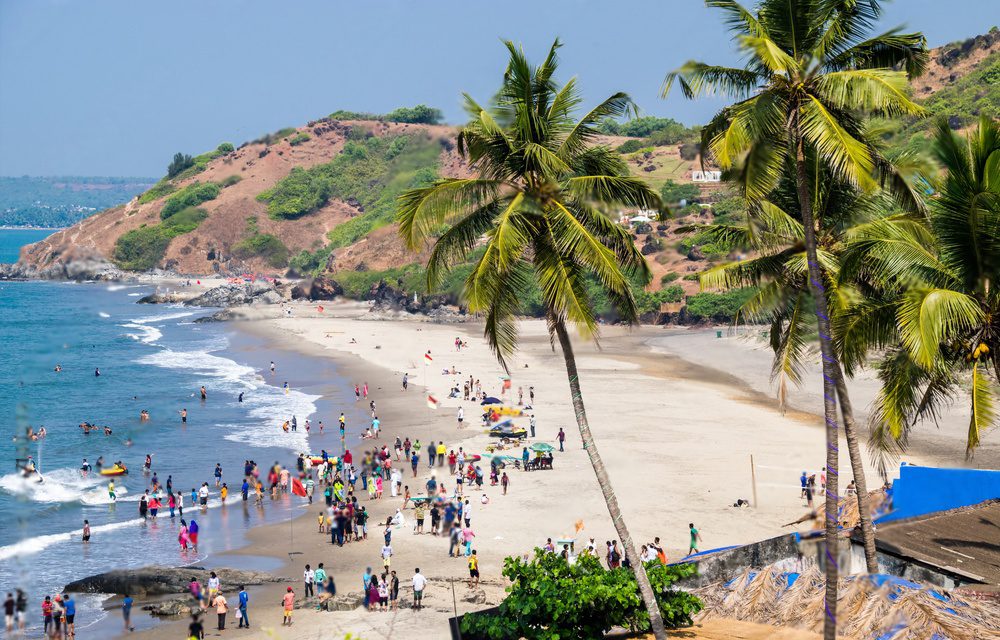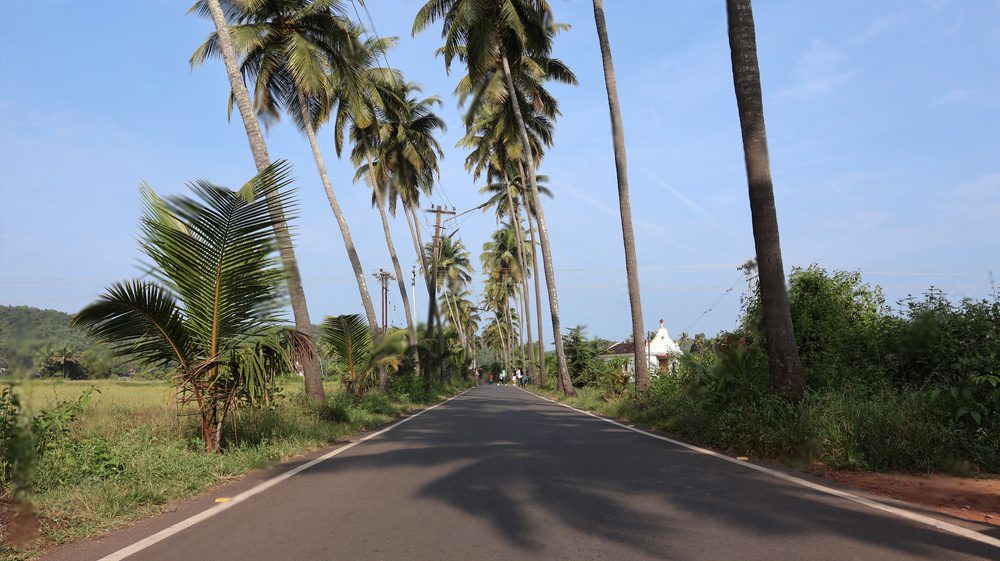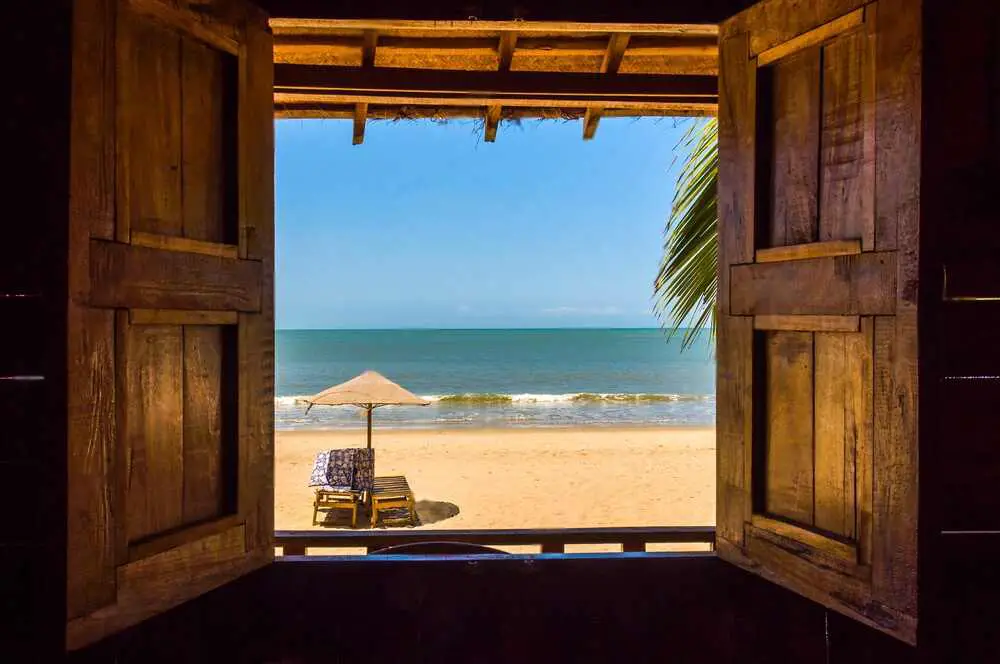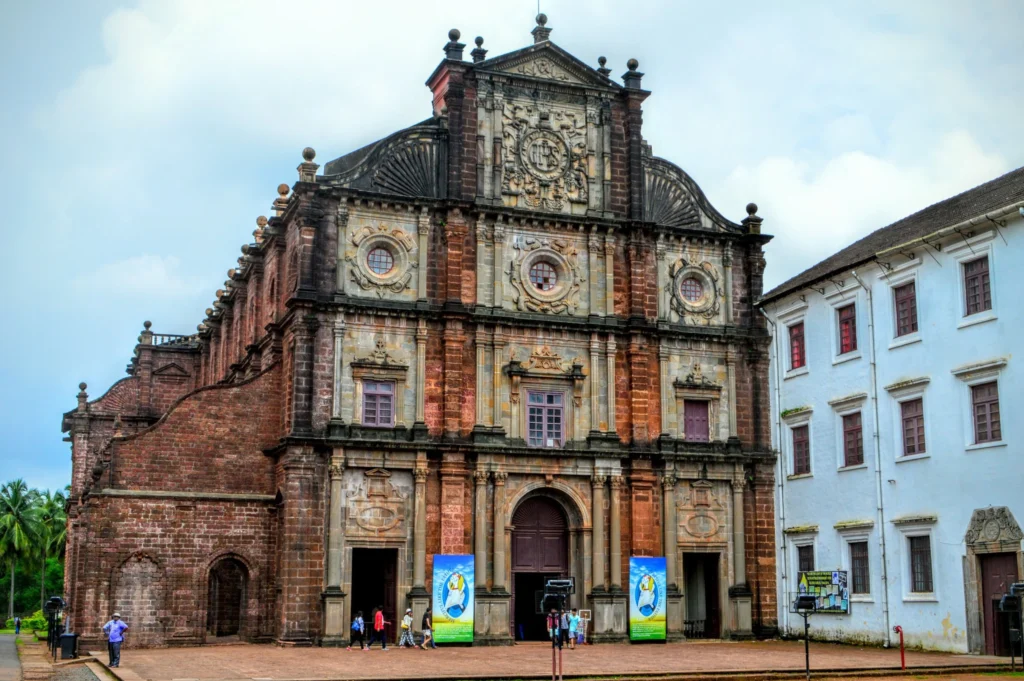Forget the throngs of tourists and the typical sightseeing circuit. Sarnath, a captivating destination tucked away in the heart of India, beckons travelers seeking a unique experience. This hidden gem seamlessly blends profound historical significance with a serene natural beauty, offering a glimpse into the past and a peaceful retreat in the present.
Steeped in rich cultural heritage, Sarnath boasts ancient relics and timeless architecture that whisper tales of a bygone era. Unlike the more prominent tourist spots, Sarnath retains an air of mystery, inviting exploration and discovery. Whether you’re a history buff enthralled by bygone eras, a nature lover seeking solace, or simply someone yearning for tranquility, Sarnath promises to weave its magic on you.
How to reach:
Soaring In:
For a quick arrival, consider flying into Kolkata’s Netaji Subhas Chandra Bose International Airport. With connections to major Indian and international cities, this airport allows you to reach Sarnath swiftly. Once you land, taxis and buses are stationed to transport you towards Sarnath. While the distance is roughly 150 kilometers, expect the road trip to take around 4-5 hours.
Train Travel:
Sarnath boasts excellent train connectivity. The nearest major station is Bardhaman Junction, a bustling hub with frequent trains departing from Kolkata and other parts of West Bengal. Upon arrival at Bardhaman Junction, a short 30-kilometer journey separates you from Sarnath. Local buses and taxis are readily available to take you to your final destination.
Road Trip Options:
Sarnath welcomes those who love a good road trip. Here are your options for a smooth ride:
- Private Car: Craving comfort and flexibility? Hire a car or taxi from Kolkata or nearby cities. The drive via NH19 and NH2 takes about 4-5 hours, offering scenic glimpses of the West Bengal countryside.
- Budget-Friendly Buses: Numerous government-run and private buses operate regularly between Kolkata and Sarnath. Board one from the Esplanade Bus Terminus or other major bus stations in Kolkata. This cost-effective option typically takes 5-6 hours.
- Self-Drive Adventure: Calling all driving enthusiasts! Renting a car allows you to explore Sarnath at your own pace. The route is well-marked, promising a scenic journey.
Local Connections:
Once you reach Bardhaman or a nearby town, a network of local transport awaits, including auto-rickshaws, cycle rickshaws, and local buses, to take you the final leg of your journey to Sarnath.
Best time to visit:
Winter Wonderland (October to February):
Winter transforms Sarnath into a haven of cool comfort. Temperatures range from a refreshing 10°C to a pleasant 25°C, making it the ideal time for exploration. Crisp air and clear skies create a photographer’s paradise, perfect for capturing stunning visuals of the historical sites. Take leisurely walks and delve deep into the rich history that surrounds you. If you’re lucky, your visit might coincide with vibrant local festivals and cultural events, adding an extra layer of magic to your journey.
Summer Siesta (March to June):
Summer can be quite toasty in Sarnath, with temperatures climbing between a manageable 25°C and a scorching 40°C. The rising humidity levels can make outdoor adventures less enjoyable. While sightseeing under the midday sun might be challenging, museums and other indoor attractions offer a cool escape from the heat. If you must explore outdoors, aim for the cooler mornings or late evenings. Staying hydrated is crucial during this season.
Monsoon Melodies (July to September):
The monsoon season brings moderate to heavy rainfall, offering a much-needed respite from the summer heat. However, the increased humidity can be a drawback. Temperatures typically hover between a pleasant 20°C and 30°C. The rains transform Sarnath’s landscape into a verdant paradise, with a captivating emerald glow. However, heavy downpours can disrupt travel plans and make outdoor activities tricky.
Attractions:
Sarnath Archaeological Site:
Dhamek Stupa:


Dominating the Sarnath landscape with quiet majesty is the Dhamek Stupa. Erected in 500 CE, it succeeded an even older structure commissioned by the illustrious Ashoka the Great. This enduring monument stands as a powerful symbol, whispering tales of Buddhism’s unwavering legacy. Legend has it that here, on this very ground, the Buddha delivered his first sermon to his five disciples after achieving enlightenment. This pivotal event, known as “Setting the Wheel of Dharma in Motion,” marked the birth of a philosophy that would influence millions of lives for centuries to come.
Sarnath Museum:


No exploration of Sarnath’s rich history is complete without a visit to the Sarnath Museum. This gem, boasting the title of the oldest site museum under the Archaeological Survey of India, is a treasure chest overflowing with stories waiting to be unearthed. Step inside, and you’ll find yourself surrounded by an impressive collection of relics meticulously excavated from the Sarnath Archaeological Site itself.
The museum’s undisputed star? The Ashoka Pillar, proudly showcasing the iconic Lion Capital – the very same symbol that adorns India’s national emblem. But the wonders on display extend far beyond this single masterpiece. Galleries overflow with exquisite sculptures, captivating inscriptions, and intricate carvings, each a silent testament to the artistry and devotion of a bygone era. As you wander through these halls, the exhibits come alive, whispering tales of Buddhist art in all its splendor.
Chaukhandi Stupa:


While the Dhamek Stupa basks in the spotlight, another captivating monument in Sarnath awaits discovery – the Chaukhandi Stupa. Steeped in history, this stupa marks the very spot where tradition whispers that Gautama Buddha reunited with his five disciples after attaining enlightenment. Its unique charm lies in the distinctive octagonal tower, a later addition by the Mughal Emperor Akbar in honor of his father’s visit.
The core of the stupa itself is a time capsule, whispering tales from the Gupta period. Its architectural style, a testament to the era’s artistry, is a captivating sight for history enthusiasts. Nestled amidst verdant greenery, the Chaukhandi Stupa offers a haven of peace, inviting quiet contemplation.
Mulagandha Kuti Vihar:


Juxtaposed against the ancient ruins of Sarnath, the Mulagandha Kuti Vihar presents a striking contrast. This modern Buddhist temple, constructed in the early 20th century by the Mahabodhi Society, serves as a vibrant hub for the city’s Buddhist community. Step inside, and you’ll be enveloped by a world of serenity and artistic marvel.
The temple’s interiors are a captivating tapestry woven with breathtaking frescoes. Created by the renowned Japanese artist Kosetsu Nosu, these murals transcend mere beauty. They act as portals into the life and teachings of Buddha. Each stroke tells a story, offering a profound understanding of Buddhist philosophy. As you wander through the halls, intricate depictions of Buddha’s life unfold before you, leaving an indelible mark on your memory.
Thai Temple:


Sarnath’s cultural tapestry boasts another vibrant thread – the Thai Temple. Erected by the Thai government, this temple stands as a powerful symbol of the deep-rooted cultural and religious bonds between Thailand and India. As you approach, its ornately curved roofs and intricate decorations instantly transport you to Southeast Asia.
The temple grounds themselves are a haven of tranquility. Lush gardens, meticulously landscaped, intertwine with serene water features, creating a symphony of calming sights and sounds. Gentle trickles and the rustle of leaves lull you into a state of relaxation, perfect for meditation or simply enjoying a moment of peace. Stepping inside, prepare to be captivated. A magnificent statue of Buddha, radiating serenity, commands the central space. Elaborate murals adorn the walls, each a captivating scene from Buddhist lore, whispering tales of the faith’s rich history.
Local Experiences:
- Embrace the Chants: Join a chanting session at the Mulagandha Kuti Vihar or the Japanese Temple. Witness Buddhist practices firsthand and find a moment of peace and reflection amidst the melodic chants.
- Market Adventures: Delve into the vibrant local markets and experience the daily life of Sarnath’s residents. Discover unique handicrafts, souvenirs, and local delicacies. Chat with vendors and artisans to gain cultural insights.
- Monastery Musings: Spend time at a monastery to understand monastic life. Many welcome visitors to observe daily routines like meditation, prayer, and communal meals.
- Cultural Extravaganza: Immerse yourself in a cultural program or festival. Traditional music, dance, and performances showcase the rich heritage of Sarnath and West Bengal.
- Guided Walk with Wisdom: Embark on a guided heritage walk to gain a deeper understanding of Sarnath’s historical and cultural significance. Knowledgeable guides will unveil fascinating stories behind the monuments.
- Culinary Delights: Indulge in the flavors of West Bengal at local eateries. Savor Bengali sweets, fish curries, and street food delicacies. Engage with local chefs to appreciate the region’s culinary traditions.
- Meditation and Yoga: Many temples and ashrams offer meditation and yoga sessions, providing a perfect opportunity to relax and rejuvenate amidst tranquil surroundings.
- Artisanal Delights: Visit workshops where artisans create pottery, textiles, and paintings. Watch their expertise unfold and perhaps even try your hand at creating something unique.
- Birdwatching Paradise: The Deer Park isn’t just a historical site; it’s a haven for birdwatchers. Early mornings offer the chance to spot diverse bird species in their natural habitat.
- Local Schools and Projects: Visit local schools or participate in community projects. Gain a unique perspective on the local way of life and the efforts to improve education and livelihoods
Travel tips:
- Embrace the Cool: The winter months (October to February) offer the perfect weather for exploring Sarnath – cool and comfortable. Steer clear of the scorching summers and heavy monsoon rains for a more pleasant visit.
- Comfort is Key: Pack light, breathable clothing that suits the weather. Remember, Sarnath is a religious site, so opt for modest attire, especially when visiting temples. Comfortable walking shoes are a must for navigating the archaeological sites and temples.
- Mind Your Manners: Sarnath is steeped in religious significance. Maintain silence in meditation and prayer areas, remove your shoes before entering temples, and dress modestly.
- Pack Smart: Don’t forget essentials like a hat, sunglasses, sunscreen, and a reusable water bottle to stay hydrated. A small backpack for day trips will keep your belongings secure and easily accessible.
- Local Knowledge is Power: Consider hiring a local guide. Their in-depth historical and cultural insights will enrich your visit, revealing hidden stories you might miss on your own.
- Be Reachable: Ensure your phone is charged, and consider acquiring a local SIM card for better connectivity. This helps with navigation, information access, and staying in touch with travel companions.
- Wildlife Etiquette: If visiting places like Deer Park, maintain a safe distance from the animals and refrain from feeding them. Respect the natural habitat and follow park guidelines.
- Breaking the Language Barrier: Learn a few basic phrases in Bengali or Hindi. This small gesture shows respect for the local language and culture, and can help you interact with locals more easily.
- Cash on Hand: While digital payments are gaining traction, carrying some cash is still advisable for smaller purchases, tips, and local markets where card payments may not be accepted.
- Hydration and Safe Eats: Drink bottled or filtered water to avoid waterborne illnesses. While indulging in local cuisine is encouraged, be cautious with street food. Opt for freshly prepared and well-cooked items to avoid any stomach issues.
Conclusion
Unveiling the tapestry of Sarnath, West Bengal, is an experience unlike any other. Here, ancient ruins and serene temples whisper tales of Buddha, offering both historical echoes and tranquil escapes. Immerse yourself in the vibrant local life, participating in traditional rituals and exploring bustling markets overflowing with local treasures. Plan your visit for the comfortable winter months (October to February) and embrace local customs with modest clothing. To truly unlock Sarnath’s hidden stories, consider hiring a local guide. Xplro.com curates unforgettable experiences that will enrich your journey, ensuring a respectful and enriching exploration into the heart of West Bengal’s historical and spiritual legacy. Safe travels and enjoy your time in Sarnath.
FAQs
What is the best time to visit Sarnath?
- The best time to visit Sarnath is during the winter months, from October to February. The weather is cool and pleasant, making it ideal for sightseeing and outdoor activities.
How do I reach Sarnath from Kolkata?
- You can reach Sarnath from Kolkata by air, train, or road. The nearest airport is Netaji Subhas Chandra Bose International Airport in Kolkata. From there, you can take a taxi or bus to Sarnath. Alternatively, you can take a train to Bardhaman Junction and then a taxi or local transport to Sarnath. The road journey from Kolkata to Sarnath takes around 4-5 hours by car or bus.
What are the must-visit attractions in Sarnath?
- Key attractions in Sarnath include the Sarnath Archaeological Site, Dhamek Stupa, Sarnath Museum, Chaukhandi Stupa, Mulagandha Kuti Vihar, Ashoka Pillar, Deer Park, Thai Temple, Tibetan Temple, and Japanese Temple.
Are there any guided tours available in Sarnath?
- Yes, guided tours are available in Sarnath. Local guides offer heritage walks and tours of the archaeological sites and temples, providing detailed insights into the history and cultural significance of the area.
What should I wear when visiting Sarnath?
- Wear light, comfortable clothing suitable for the weather. Modest attire is recommended, especially when visiting religious sites. Comfortable walking shoes are essential for exploring the archaeological sites and temples.
Is photography allowed at the historical sites?
- Photography is generally allowed at most historical sites in Sarnath. However, it’s important to respect signs that indicate no photography zones and to ask for permission before photographing people, especially in religious or private areas.
Can I participate in meditation or yoga sessions in Sarnath?
- Yes, many temples and ashrams in Sarnath offer meditation and yoga sessions for visitors. These sessions provide an opportunity to relax, rejuvenate, and connect with your inner self in a serene environment.
What local dishes should I try in Sarnath?
- Try local Bengali cuisine, including fish curry, rice dishes, and sweets like rasgulla and sandesh. Street food delicacies such as puchkas (pani puri) and jhalmuri are also popular. Always ensure the food is freshly prepared and well-cooked.
Are there accommodations available in Sarnath?
- Yes, Sarnath offers a range of accommodations, from budget guesthouses to mid-range hotels. Nearby Varanasi, just a short drive away, provides more options, including luxury hotels and hostels.
Is it safe to travel to Sarnath?
- Sarnath is generally safe for tourists. However, it is advisable to take standard travel precautions, such as keeping your belongings secure, staying aware of your surroundings, and following local guidelines.
How long should I plan to stay in Sarnath?
- A stay of 1-2 days is usually sufficient to explore the main attractions of Sarnath. If you wish to delve deeper into the local culture and participate in activities like meditation and yoga, consider extending your stay to 3-4 days.
What local customs should I be aware of in Sarnath?
- Respect local customs by dressing modestly, especially at religious sites, removing shoes before entering temples, maintaining silence in meditation and prayer areas, and being mindful of local traditions and practices. Learning a few basic phrases in Bengali or Hindi can also be helpful and appreciated by the locals.







